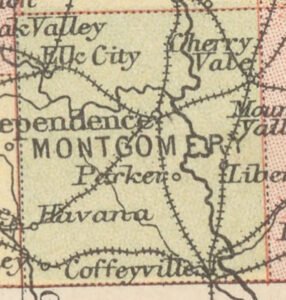Building the Montgomery County High School
In early 1897, a bill to establish a county high school in Independence, Montgomery County, was introduced in the Kansas legislature and quickly received overwhelming public support. After passing both the Senate and House with minimal opposition, it became law on March 12. However, opposition emerged from certain county areas, leading to protests against the school. Despite divided trustee appointments, the board organized and accepted land for the school. They voted on a tax levy for construction, which led to the selection of an architect and subsequent bids for building the school, culminating in a total contract of $23,077.


